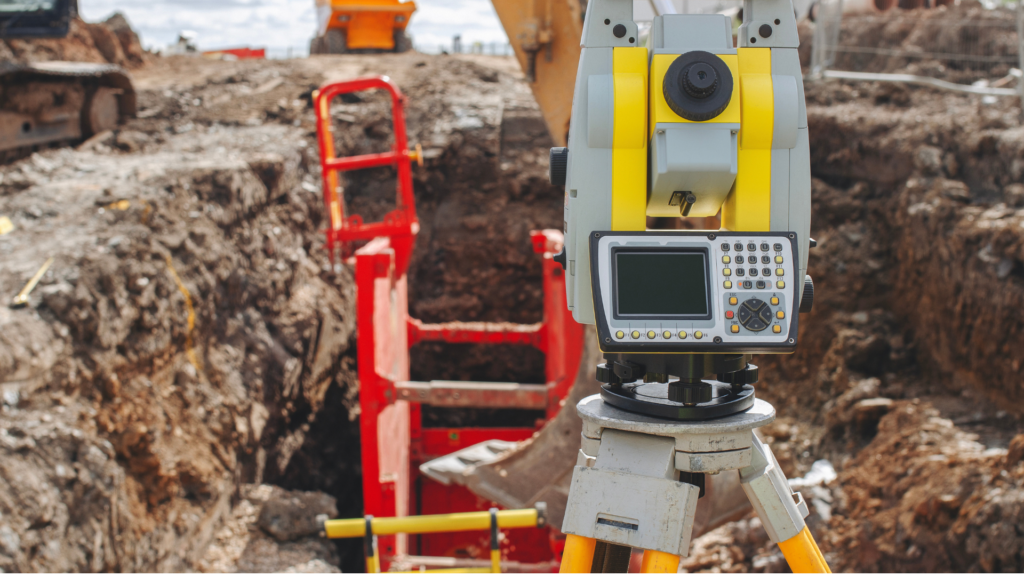Digging isn’t just part of the job, it *is* the job. But when your workday involves moving literal tons of dirt, the margin for error is razor-thin. One wrong move and that trench turns from a workspace into a death trap. This isn’t fearmongering, it’s physics. So let’s break down the real risks of trenching and excavation before anyone ends up six feet under for the wrong reason.
If it’s deeper than it is wide, congrats, you’ve got a trench and a whole new set of hazards
The Most Common Trenching Hazards
- Cave-ins: No dramatic warning, just thousands of pounds of soil crashing down in seconds.
- Falling Objects: Tools, equipment, materials, gravity doesn’t discriminate.
- Bad Air Days: Trenches can become low-oxygen, toxic gas nightmares in anything over 4 feet deep.
- Mobile Equipment Mayhem: Backhoes, dump trucks, and excavators get dangerously close to edges… and workers.
Pro Tip: Never trust a trench that looks “fine.” If it’s over 5 feet deep, OSHA says protection is not optional.
The ground is lying to you, here’s why trench walls collapse
- Water Saturation: Wet soil = weak soil. Rain is not your friend here.
- Soil Type: Sand collapses faster than a bad excuse under pressure. Know your dirt.
- Vibrations & Heavy Equipment: That jackhammer next door? It might be shaking your trench loose.
- Weather Mood Swings: Rain, sun, wind, nature’s way of destabilizing your carefully dug hole.
When a cave-in happens, this is what you don’t do: panic and jump in
- Establish Command: Set up a safety perimeter, 150 feet minimum.
- Assess the Scene: Get the facts before the frenzy.
- Secure the Area: No looky-loos, no running machines, just calm and control.
- Rescue the Right Way: Use trained teams with the right equipment. Hero moves get people killed.
- Extract Carefully: From the diaphragm up, with hand tools only. No shortcuts.
- Debrief Like You Mean It: Every rescue should teach you how to never need one again.
Important: If you’re not trained, stay out of the trench. Good intentions don’t stop cave-ins.
If you didn’t plan before you dug, you already messed up
Essential Pre-Digging Steps
- Call Before You Dig: Underground lines don’t forgive mistakes. Always check.
- Know Your Soil: Identify your soil type to choose the right protection plan.
- Test the Air: Anything over 4 feet deep needs atmosphere testing, because breathing is cool.
- Plan Your Way Out: Ladders, ramps, or steps every 25 feet. No trench should be a trap.
- Keep Stuff Away from the Edge: Two feet of clearance from equipment and spoil piles, or enjoy your bonus cave-in.
Pro Tip: If it’s deeper than 5 feet, you protect it. No debates, no shortcuts.
No one’s getting buried today, so let’s talk protection
OSHA-approved protective systems are your trench’s life support. Use them or risk a headline.
Sloping & Benching
- Sloping: Think diagonal, not vertical. No steeper than 34 degrees.
- Benching: Steps, not slides. Type C soil says “nope” to this one.
Shoring
- Metal or wood supports that hold your trench together when the soil wants to fall apart.
Shielding (Trench Boxes)
- These don’t stop collapses, they just keep you alive if one happens.
Key Rule: Trench is 5 feet or deeper? You better be using one of these, or you’re playing with lives.
OSHA’s 5, 4, 3, 2, 1 rule is the cheat code every digger needs
- 5 Feet: Protective systems are mandatory. No exceptions, not even for “quick jobs.”
- 4 Feet: Trenches deeper than this need safe ways in and out.
- 3 Feet: Ladders must extend 3 feet above the edge, climbing shouldn’t be a gamble.
- 2 Feet: Keep spoil piles and machinery away from trench edges. They’re not balcony decor.
- 1 Competent Person: One trained person calling the shots every day, no matter what.
Pro Tip: That “competent person” needs to recheck everything after rain, vibrations, or any major shift. Safety isn’t one-and-done.
Your daily trench inspection could be the difference between life and death
Daily Inspection Checklist
- Inspect trench walls and protection systems before anyone steps in.
- Remove standing water. No one needs a surprise mud bath.
- Test air quality, your lungs deserve oxygen.
- Check ladder placement. OSHA says every 25 feet, no guesswork allowed.
- Clear trench edges. Two feet minimum, always.
Before you go, there’s one more training that pairs perfectly with this
If you’re working in tight underground spaces, don’t miss the Confined Spaces: Acceptable Entry Conditions Training Course. Because once you’re below ground, every decision counts, even more than usual.
Expand your knowledge with excavation safety training
The Excavation, Trenching, and Shoring Safety in Construction Training Course introduces safe trenching practices. For advanced training, enroll today and strengthen your expertise in excavation safety. Dig smart, stay safe, and never end up on tomorrow’s accident report.
References



